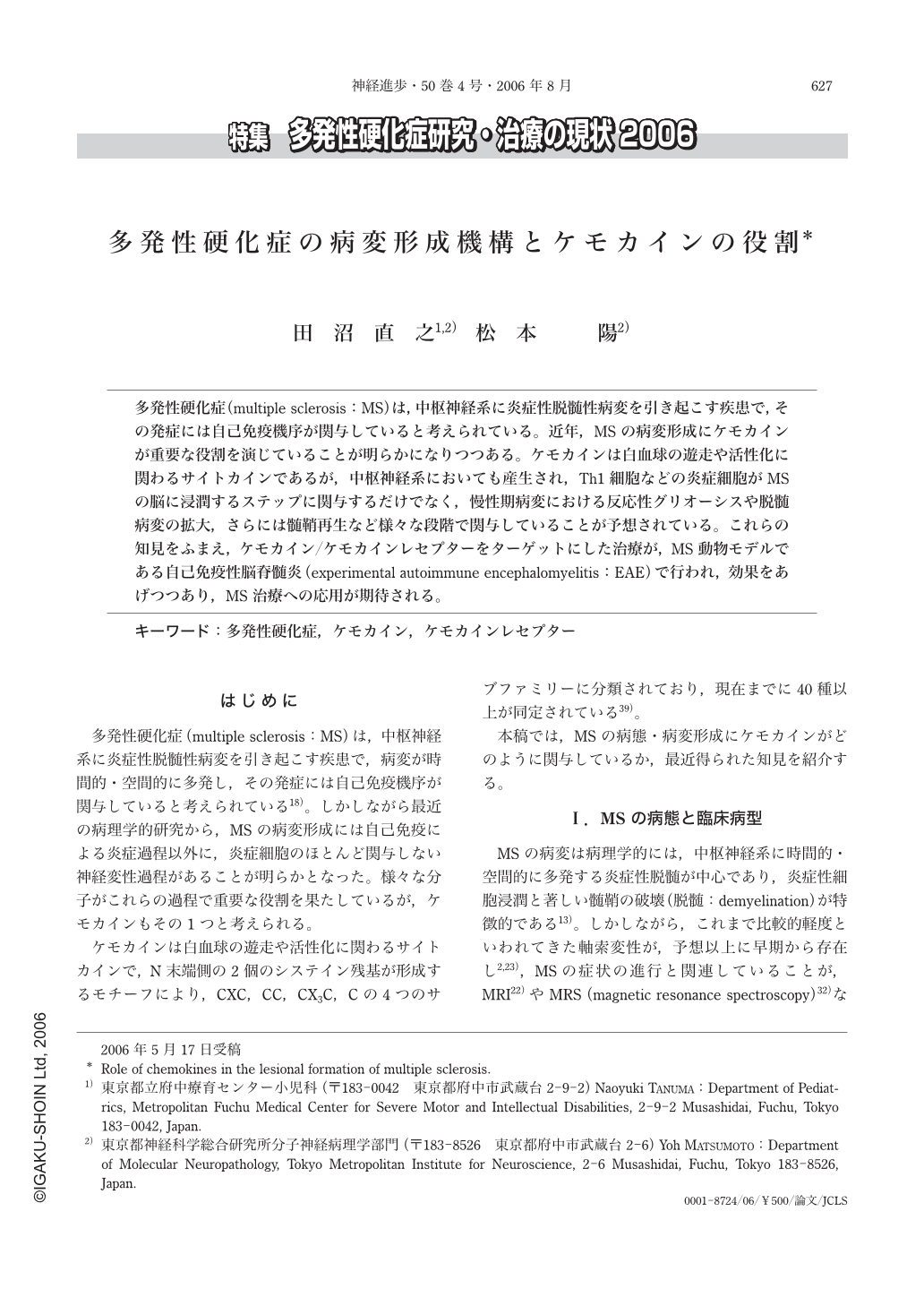Japanese
English
- 有料閲覧
- Abstract 文献概要
- 1ページ目 Look Inside
- 参考文献 Reference
多発性硬化症(multiple sclerosis:MS)は,中枢神経系に炎症性脱髄性病変を引き起こす疾患で,その発症には自己免疫機序が関与していると考えられている。近年,MSの病変形成にケモカインが重要な役割を演じていることが明らかになりつつある。ケモカインは白血球の遊走や活性化に関わるサイトカインであるが,中枢神経系においても産生され,Th1細胞などの炎症細胞がMSの脳に浸潤するステップに関与するだけでなく,慢性期病変における反応性グリオーシスや脱髄病変の拡大,さらには髄鞘再生など様々な段階で関与していることが予想されている。これらの知見をふまえ,ケモカイン/ケモカインレセプターをターゲットにした治療が,MS動物モデルである自己免疫性脳脊髄炎(experimental autoimmune encephalomyelitis:EAE)で行われ,効果をあげつつあり,MS治療への応用が期待される。
Multiple sclerosis(MS)is an inflammatory demyelinating disease of the central nervous system(CNS). The pathological hallmark of MS consists of demyelination with inflammatory cell infiltration and axonal injury. Chemokines and their receptors are proposed to play an important role not only in the inflammatory recruitment of leukocytes into the CNS, but also in the reactive gliosis, axonal degeneration via macrophage/microglia activation, and remyelination. In this review, we have introduced recent progress in the MS research in terms of chemokines and their receptors. These studies suggest that chemokines and their receptors could be possible targets for therapeutic interventions. Some chemokine receptor antagonists are under development and phase 1-2 clinical trials for MS in the United States.

Copyright © 2006, Igaku-Shoin Ltd. All rights reserved.


